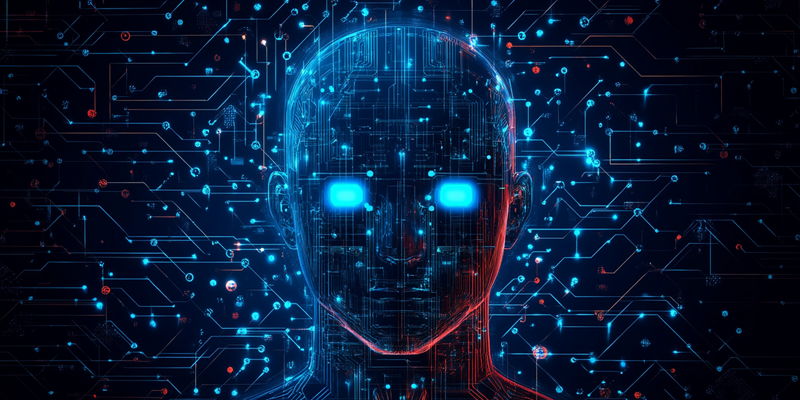Generative AI (GenAI) is no longer a futuristic concept confined to the annals of speculative fiction. It’s here, and it’s rapidly altering the landscape of technology, including cybersecurity. The proliferation of this technology poses numerous questions about its safety and our preparedness in mitigating associated risks. As companies and governments rush to harness its capabilities, understanding and addressing these concerns are paramount. From automated phishing to autonomous hacking, GenAI has the potential to cause harm on an unprecedented scale. Therefore, it’s imperative to understand the dual nature of this technology and how we can safeguard against its misuse.
The Double-Edged Sword of Generative AI
Generative AI has demonstrated tremendous potential in various domains, from revolutionizing creative processes to automating numerous tasks. However, its utility comes with significant risks. One startling example is the propagation of disinformation and deepfakes. These AI-generated forgeries can create convincingly real but entirely false content, making it challenging to discern truth from fiction. In the age of social media, where misinformation can spread like wildfire, the implications are profound. The ability of GenAI to generate credible yet entirely fabricated information can undermine public trust, lead to reputational damage, and even influence political landscapes.
Moreover, cybercriminals can weaponize GenAI for more nefarious purposes. Phishing schemes, already a significant problem, could reach new heights of sophistication. Advanced AI models can craft highly personalized and convincing phishing emails that are harder to identify and evade. The automation capabilities of GenAI mean that these threats can scale rapidly, affecting more victims in less time. Additionally, the generation of malware by AI systems poses another layer of complexity for cybersecurity experts. These AI-generated malware programs can mutate and learn in real-time, making traditional detection and mitigation methods less effective and potentially obsolete.
Cybersecurity Threats: Present and Future
Despite its novelty, GenAI is already exhibiting current risks. Companies have begun to notice breaches in their AI systems, signaling the beginning of a potentially troubling trend. We are yet to witness a significant high-profile breach attributed directly to GenAI, but the frequency of less-publicized incidents is growing. Hackers are exploring the potential of using Generative AI to enhance ransomware and other cyberattack strategies, revealing vulnerabilities in systems that were previously considered secure. This early wave of AI-powered attacks serves as a warning bell, urging companies to fortify their defenses before a catastrophic breach occurs.
Looking ahead, the picture becomes even more daunting. Researchers highlight the growing threat of autonomous hacking, where GenAI could independently seek and exploit system vulnerabilities. This ability raises the stakes, as machines can operate continuously, detecting weaknesses far quicker than human hackers. The prospect of GenAI-powered attacks means companies must bolster their defenses for threats that are increasingly complex and evolving at an unprecedented rate. In a future where AI can autonomously breach systems, the traditional cybersecurity models face the daunting task of adapting or becoming obsolete. Therefore, both present and future risk landscapes demand proactive strategies to counter threats that are no longer checked by human limitations.
Regulatory Frameworks and Ethical Considerations
The race to implement GenAI has outpaced the development of regulatory frameworks that can effectively govern its use. Organizations like the FCC are striving to create guidelines, particularly around AI-generated content to curb the rise of malicious robocalls and fraudulent activities. However, these efforts face significant delays and enforcement challenges. Policymakers are often playing catchup, trying to legislate in a field where technology changes almost daily. This lag in regulatory measures leaves a gap that cybercriminals can exploit, making it crucial for regulations to evolve at a pace comparable to technological advancements.
Ethical considerations also come to the fore. The dual-use nature of generative AI makes it challenging to draw clear boundaries between beneficial and harmful uses. Ensuring responsible AI deployment requires more than just regulatory oversight; it necessitates a cultural shift within organizations. Many companies claim to adhere to responsible AI principles, but in practice, adherence is often superficial. The emphasis on innovation and market leadership can overshadow the moral obligations to ensure these technologies are used safely and ethically. This ethical ambiguity complicates the regulatory landscape, requiring a more nuanced and comprehensive approach to oversight and enforcement.
Mitigating GenAI Risks: Corporate and Governmental Strategies
Generative AI (GenAI) is no longer a distant, futuristic concept limited to the realm of science fiction. It’s already here, and it’s quickly changing the technological landscape, especially in the field of cybersecurity. With the widespread adoption of this technology, numerous questions arise regarding its safety and our readiness to manage the associated risks. As companies and governments race to tap into its potential, it becomes crucial to comprehend and tackle these concerns head-on.
GenAI can be harnessed for both beneficial and malicious purposes. It has the power to revolutionize industries, enhance productivity, and solve complex problems. However, it also possesses the potential to inflict harm on an unprecedented scale, such as through automated phishing schemes or autonomous hacking attempts. This dual nature underscores the importance of understanding how to protect against the misuse of GenAI.
As we integrate GenAI into more systems and processes, the responsibility to develop robust safeguards increases. This involves crafting better policies, enhancing cybersecurity measures, and fostering collaboration between various stakeholders to ensure the technology is used ethically and responsibly. By doing so, we can maximize the benefits of GenAI while minimizing and managing its risks, paving the way for a safer and more productive future with this powerful tool.

